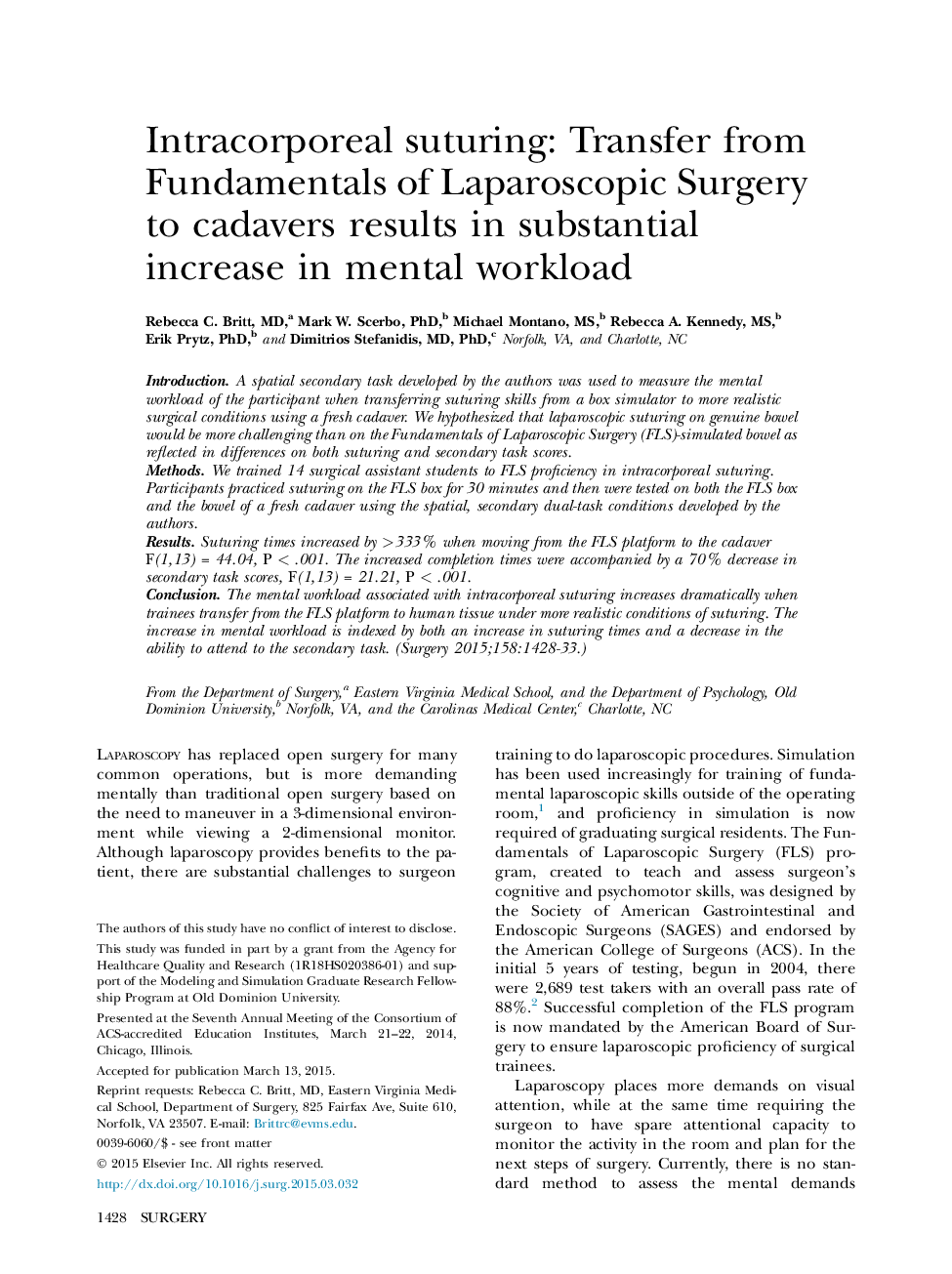| Article ID | Journal | Published Year | Pages | File Type |
|---|---|---|---|---|
| 4306782 | Surgery | 2015 | 6 Pages |
IntroductionA spatial secondary task developed by the authors was used to measure the mental workload of the participant when transferring suturing skills from a box simulator to more realistic surgical conditions using a fresh cadaver. We hypothesized that laparoscopic suturing on genuine bowel would be more challenging than on the Fundamentals of Laparoscopic Surgery (FLS)-simulated bowel as reflected in differences on both suturing and secondary task scores.MethodsWe trained 14 surgical assistant students to FLS proficiency in intracorporeal suturing. Participants practiced suturing on the FLS box for 30 minutes and then were tested on both the FLS box and the bowel of a fresh cadaver using the spatial, secondary dual-task conditions developed by the authors.ResultsSuturing times increased by >333% when moving from the FLS platform to the cadaver F(1,13) = 44.04, P < .001. The increased completion times were accompanied by a 70% decrease in secondary task scores, F(1,13) = 21.21, P < .001.ConclusionThe mental workload associated with intracorporeal suturing increases dramatically when trainees transfer from the FLS platform to human tissue under more realistic conditions of suturing. The increase in mental workload is indexed by both an increase in suturing times and a decrease in the ability to attend to the secondary task.
